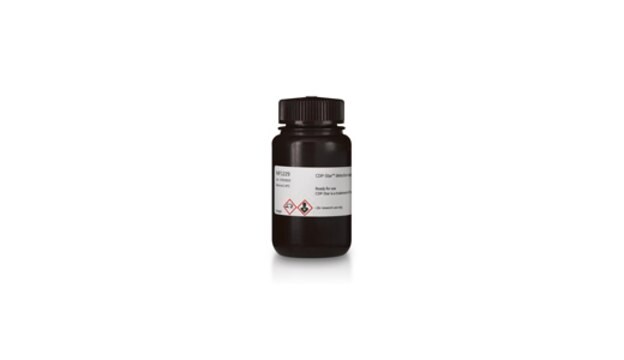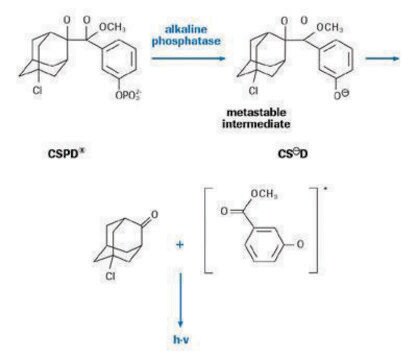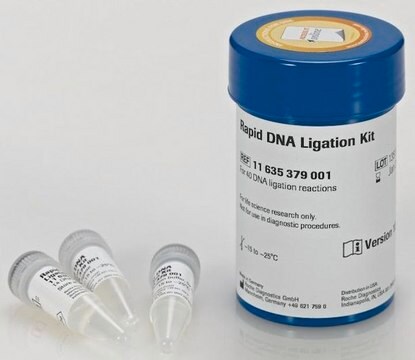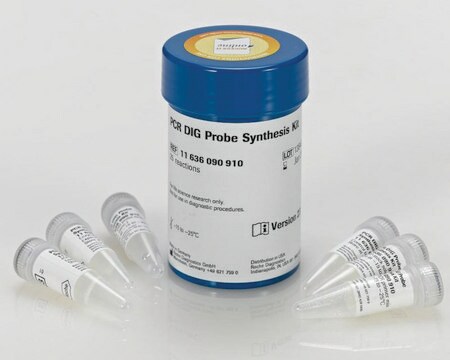12041677001
Roche
CDP-Star®, ready-to-use
>98%, solution, suitable for dot blot, suitable for Northern blotting, suitable for Southern blotting
Iniciar sesiónpara Ver la Fijación de precios por contrato y de la organización
About This Item
UNSPSC Code:
12352204
Productos recomendados
description
Disodium 2-chloro-5-(4-methoxyspiro {1,2-dioxetane-3,2′-(5′-chloro)tricyclo[3.3.1.13,7 ]decan}-4-yl)-1-phenyl phosphate
Quality Level
assay
>98%
form
solution
packaging
bottle of 2 × 50 mL ([0.25 mM])
manufacturer/tradename
Roche
technique(s)
Northern blotting: suitable
Southern blotting: suitable
dot blot: suitable
storage temp.
2-8°C
Application
Used for the nonradioactive detection of labeled nucleic acid probes on membrane blots:
- Southern blot
- Northern blot
- Dot blot
- Colony and plaque hybridization
- Gel shift assays
Used for the nonradioactive detection of labeled nucleic acid probes on membrane blots:
- Southern blot
- Northern blot
- Dot blot
- Colony and plaque hybridization
- Gel shift assays
- Chemiluminescent detection.
Features and Benefits
Contents
0.25 mM solution (0.124 mg/ml), ready-to-use, colorless solution
0.25 mM solution (0.124 mg/ml), ready-to-use, colorless solution
CDP-Star is a chemiluminescent substrate for alkaline phosphatase that enables fast, ultra-sensitive detection of biomolecules by producing extremely rapid visible light. Light emission is recorded on X-ray film or on luminescence imager systems.
- Save time with a fast, ultra-sensitive substrate.
- Easily strip and reprobe membranes.
- Take multiple exposures of up to two days for each experiment.
Preparation Note
Storage conditions (working solution): Washing Buffer: 15 to 25 °C, stable
Maleic Acid Buffer: 15 to 25 °C, stable
Detection Buffer: 15 to 25 °C, stable
Blocking Solution: always prepare freshly
Antibody Solution: 2 to 8 °C
Maleic Acid Buffer: 15 to 25 °C, stable
Detection Buffer: 15 to 25 °C, stable
Blocking Solution: always prepare freshly
Antibody Solution: 2 to 8 °C
Other Notes
- First exposure to X-ray film should be 5-15 minutes. Examine film and then determine other exposure times based on initial result.
- No preincubation step required.
- Apply substrate quickly to avoid gray shadows from substrate drops and drying of membrane (leads to uneven, high background).
- Do not use plastic wrap to cover blot; use hybridization bags, acetate sheet protectors, or two sheets of transparent film.
- Exposure times are shorter than with CSPD.
- Do not use nitrocellulose membranes.
For life science research only. Not for use in diagnostic procedures.
Legal Information
CDP-Star is a registered trademark of Tropix, Inc.
Storage Class
12 - Non Combustible Liquids
wgk_germany
nwg
flash_point_f
does not flash
flash_point_c
does not flash
Elija entre una de las versiones más recientes:
¿Ya tiene este producto?
Encuentre la documentación para los productos que ha comprado recientemente en la Biblioteca de documentos.
Los clientes también vieron
Non-Radioactive Detection of Trinucleotide Repeat Size Variability.
Tome S, et al.
PLoS Currents, 6 (2014)
Detection of expanded RNA repeats using thermostable group II intron reverse transcriptase.
Carrell ST, et al.
Nucleic Acids Research, 46(1), e1-e1 (2017)
Evaluation of parameters affecting switchgrass tissue culture: toward a consolidated procedure for Agrobacterium-mediated transformation of switchgrass (Panicum virgatum).
Lin CY, et al.
Plant methods, 13(1), 113-113 (2017)
Ivano Legnini et al.
Nature methods, 16(9), 879-886 (2019-08-07)
Although messenger RNAs are key molecules for understanding life, until now, no method has existed to determine the full-length sequence of endogenous mRNAs including their poly(A) tails. Moreover, although non-A nucleotides can be incorporated in poly(A) tails, there also exists
Omer Choresh et al.
Biomacromolecules, 10(10), 2852-2856 (2009-09-08)
The various silks that make up the web of the orb web spiders have been studied extensively. However, success in prey capture depends as much on the web glue as on the fibers. Spider silk glue, which is considered one
Nuestro equipo de científicos tiene experiencia en todas las áreas de investigación: Ciencias de la vida, Ciencia de los materiales, Síntesis química, Cromatografía, Analítica y muchas otras.
Póngase en contacto con el Servicio técnico
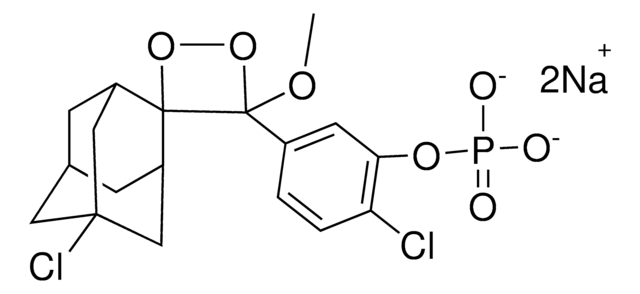
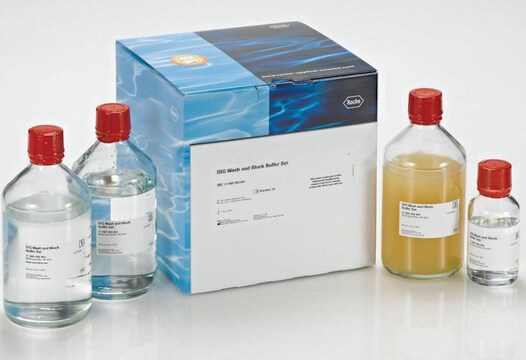
![CSPD ready-to-use Disodium 3-(4-methoxyspiro {1,2-dioxetane-3,2′-(5′-chloro)tricyclo [3.3.1.13,7]decan}-4-yl)phenyl phosphate](/deepweb/assets/sigmaaldrich/product/images/352/091/ef743cea-ccd8-44f1-8f3b-dec5a1e4f5d1/640/ef743cea-ccd8-44f1-8f3b-dec5a1e4f5d1.jpg)
